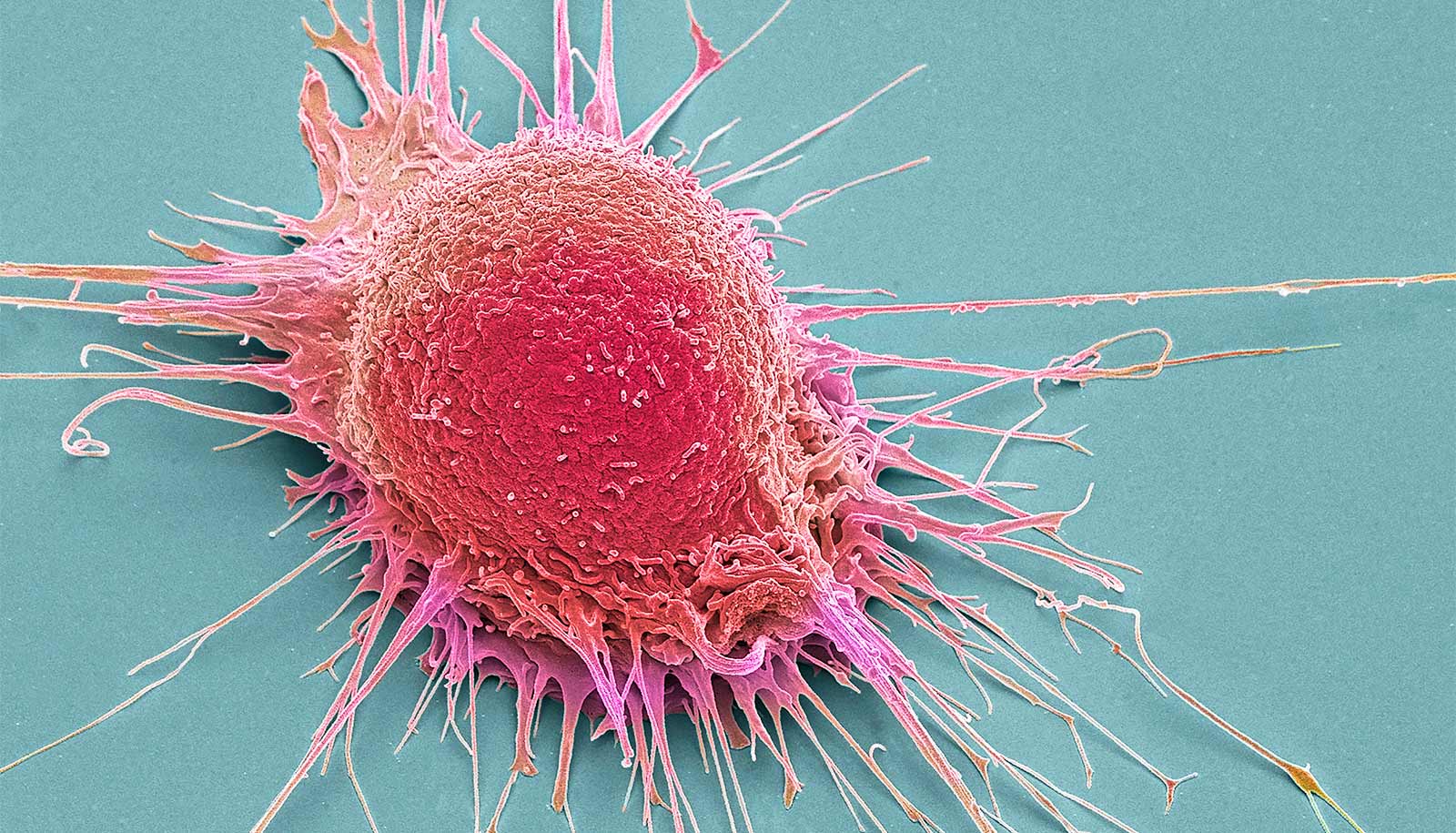The first comprehensive characterization of both the blood-brain and blood-tumor barriers in brain metastases of lung cancer could serve as a road map for treatment development.
The greatest obstacle when it comes to treating cancer that has spread to the brain is the blood-brain barrier, the brain’s natural defense mechanism that is a collection of blood vessels that can filter out what goes in and out of the brain.
“Brain metastases occur most frequently in patients diagnosed with breast and lung cancer and melanoma,” says Tiffany Lyle, assistant professor of veterinary anatomic pathology and head of the Comparative Blood-Brain Barrier Laboratory at Purdue University, whose work focuses on the pathology of the blood-brain barrier.
“These metastases have a devastating survival rate, mostly because it’s so difficult to get drugs into the brain tissue because of the blood-brain barrier.”
Brain metastases, or secondary brain tumors, occur when cancer cells spread from their original site to the brain. This happens in 10% to 30% of adults with cancer, according to the Mayo Clinic.
When cancer cells invade the brain, the blood-brain barrier transitions into the blood-tumor barrier, and this transition still presents a roadblock for effective drug delivery to the brain. Researchers haven’t been able to sufficiently characterize the formation of the blood-tumor barrier in lung cancer until now, Lyle says.
“We wanted to see what changes in the blood-brain barrier were occurring rapidly and which ones were sustained over time,” Lyle says. “Identifying those changes and pinpointing when they occur during the transition will be critical to developing treatment plans and being able to identify where, and when, cancer cells need to be targeted.”
The researchers analyzed the blood-brain and blood-tumor barriers in animal models with non-small-cell cancer cells and immunofluorescent imaging. Researchers also validated their findings by studying the blood-tumor barrier of brain metastases in human postmortem tissue.
Scientists observed that one of the sustained changes during the transition from the blood-brain barrier to the blood-tumor barrier was in one of the largest cell types in the brain that has numerous functions. These cells are known as astrocytes. Lyle says that discovery alone will be key when it comes to future treatment development.
“Identifying when that change occurs during the transition is critical because it tells us when and where the brain vasculature prevents effective drug delivery,” Lyle says.
Lyle is already collaborating with Yoon Yeo, a professor in the Department of Industrial and Physical Pharmacy, to work on improving drug delivery. Being able to truly target cancer drugs to diseased tissue could improve quality of life in patients, Lyle says.
“A goal of our research is to meaningfully contribute to the evolving field of personalized medicine and provide patients who have received a devastating diagnosis a sense of hope for treatment possibilities,” Lyle says.
The work was recently published in Oncotarget. Funding for the work came from the Showalter Foundation and the Indiana Clinical Translational Sciences Institute. Researchers from Indiana University Simon Cancer Center contributed to the work.
Source: Purdue University



